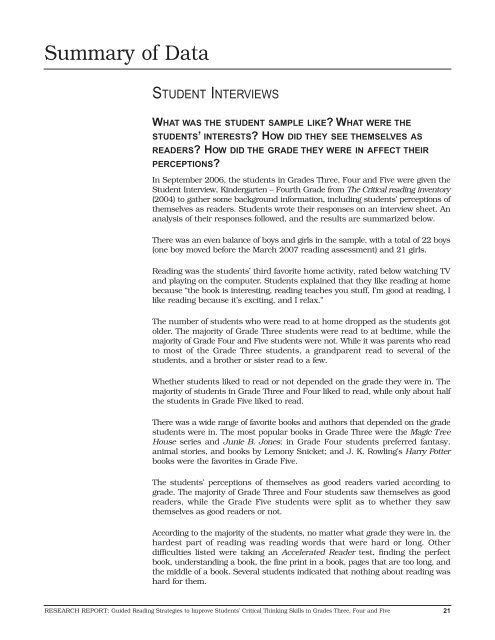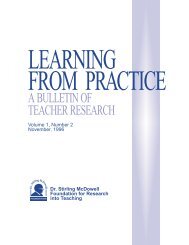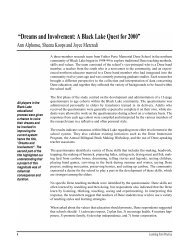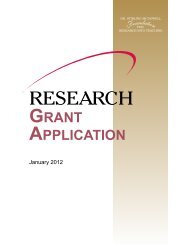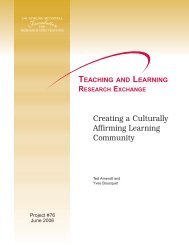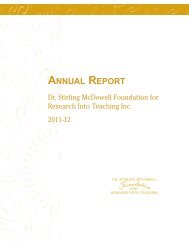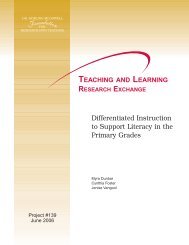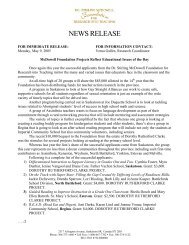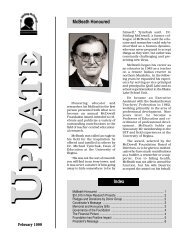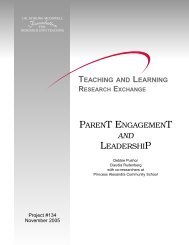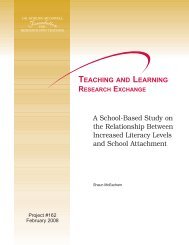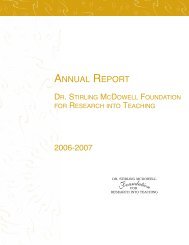Guided Reading Strategies to Improve Students - Dr. Stirling ...
Guided Reading Strategies to Improve Students - Dr. Stirling ...
Guided Reading Strategies to Improve Students - Dr. Stirling ...
- No tags were found...
You also want an ePaper? Increase the reach of your titles
YUMPU automatically turns print PDFs into web optimized ePapers that Google loves.
Summary of DataSTUDENT INTERVIEWSWHAT WAS THE STUDENT SAMPLE LIKE? WHAT WERE THESTUDENTS’ INTERESTS? HOW DID THEY SEE THEMSELVES ASREADERS? HOW DID THE GRADE THEY WERE IN AFFECT THEIRPERCEPTIONS?In September 2006, the students in Grades Three, Four and Five were given theStudent Interview, Kindergarten – Fourth Grade from The Critical reading inven<strong>to</strong>ry(2004) <strong>to</strong> gather some background information, including students’ perceptions ofthemselves as readers. <strong>Students</strong> wrote their responses on an interview sheet. Ananalysis of their responses followed, and the results are summarized below.There was an even balance of boys and girls in the sample, with a <strong>to</strong>tal of 22 boys(one boy moved before the March 2007 reading assessment) and 21 girls.<strong>Reading</strong> was the students’ third favorite home activity, rated below watching TVand playing on the computer. <strong>Students</strong> explained that they like reading at homebecause “the book is interesting, reading teaches you stuff, I’m good at reading, Ilike reading because it’s exciting, and I relax.”The number of students who were read <strong>to</strong> at home dropped as the students go<strong>to</strong>lder. The majority of Grade Three students were read <strong>to</strong> at bedtime, while themajority of Grade Four and Five students were not. While it was parents who read<strong>to</strong> most of the Grade Three students, a grandparent read <strong>to</strong> several of thestudents, and a brother or sister read <strong>to</strong> a few.Whether students liked <strong>to</strong> read or not depended on the grade they were in. Themajority of students in Grade Three and Four liked <strong>to</strong> read, while only about halfthe students in Grade Five liked <strong>to</strong> read.There was a wide range of favorite books and authors that depended on the gradestudents were in. The most popular books in Grade Three were the Magic TreeHouse series and Junie B. Jones; in Grade Four students preferred fantasy,animal s<strong>to</strong>ries, and books by Lemony Snicket; and J. K. Rowling’s Harry Potterbooks were the favorites in Grade Five.The students’ perceptions of themselves as good readers varied according <strong>to</strong>grade. The majority of Grade Three and Four students saw themselves as goodreaders, while the Grade Five students were split as <strong>to</strong> whether they sawthemselves as good readers or not.According <strong>to</strong> the majority of the students, no matter what grade they were in, thehardest part of reading was reading words that were hard or long. Otherdifficulties listed were taking an Accelerated Reader test, finding the perfectbook, understanding a book, the fine print in a book, pages that are <strong>to</strong>o long, andthe middle of a book. Several students indicated that nothing about reading washard for them.RESEARCH REPORT: <strong>Guided</strong> <strong>Reading</strong> <strong>Strategies</strong> <strong>to</strong> <strong>Improve</strong> <strong>Students</strong>’ Critical Thinking Skills in Grades Three, Four and Five21


